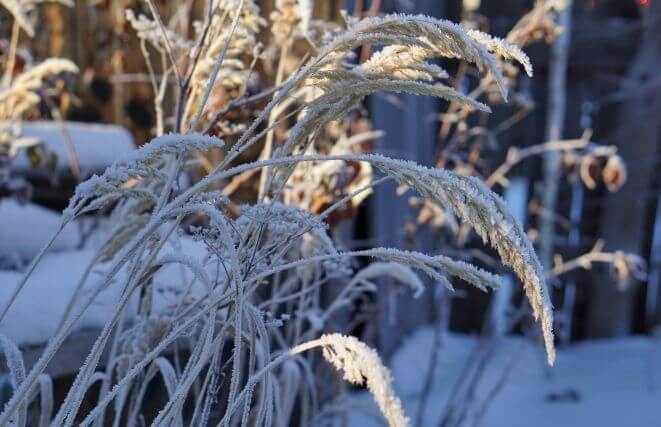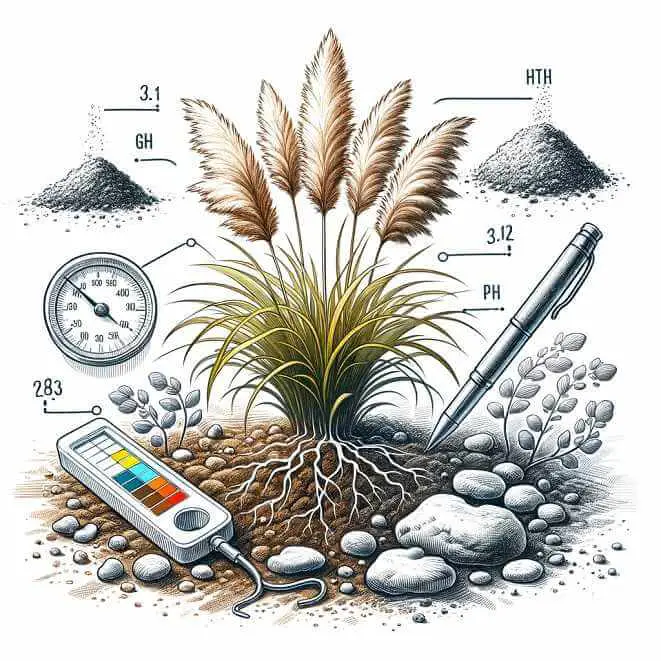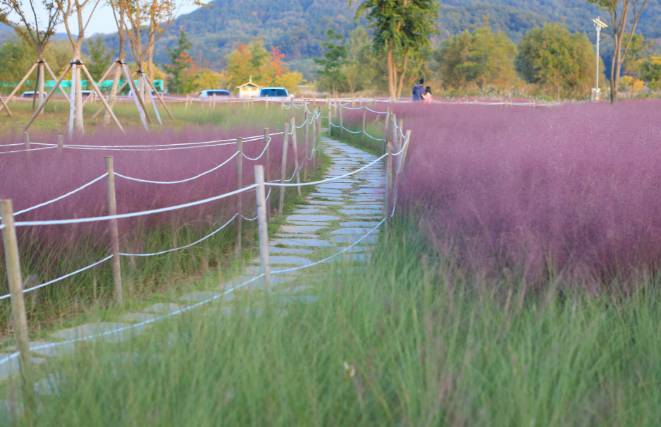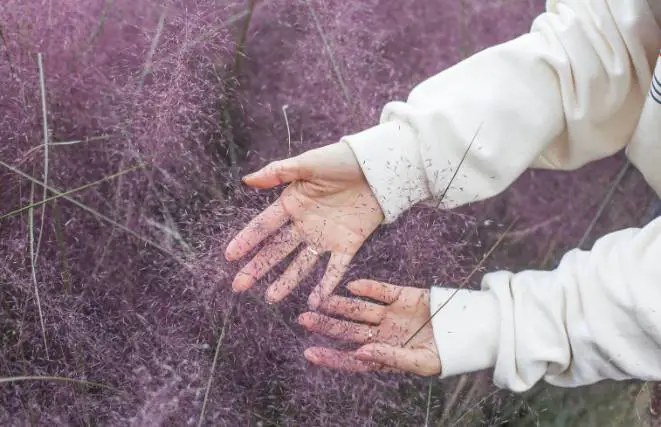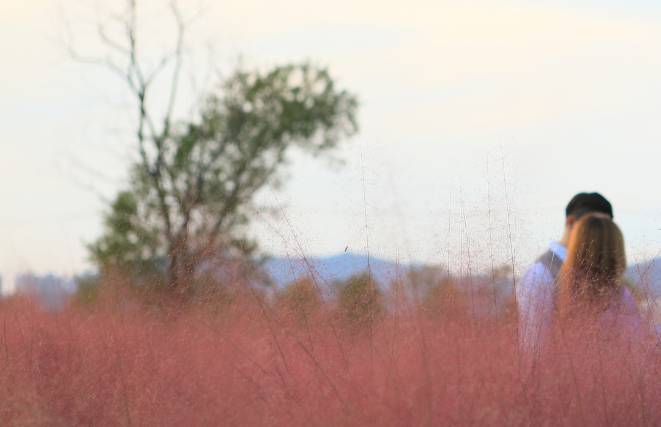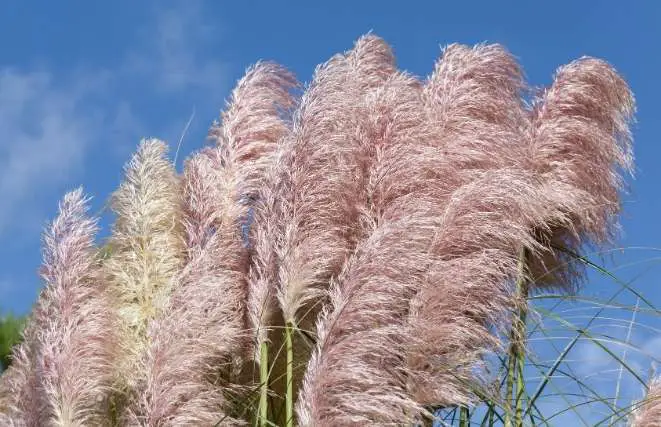Pampas grass (Cortaderia selloana) is a magnificent tall ornamental grass known for its towering plumes and graceful presence in gardens and landscapes. As the seasons change and winter approaches, gardeners and landscape enthusiasts often wonder: Does pampas grass die in the winter? In this article, we will delve into the secrets of pampas grass and explore its behavior during the colder months. Join us as we uncover pruning tips, discuss the signs of a dormant pampas grass, reveal its lifespan and examine its endurance outdoors.
Does Pampas Grass Die In The Winter?
Pampas grass is a famous perennial grass that is very easy to grow. It does not require a lot of care other than watering, and it can grow in any variety of soil, but does pampas grass die in the winter? The answer is No.
During the winter, pampas grass undergoes a period of dormancy, where it conserves energy and prepares for the following season. It’s essential to differentiate between a dormant pampas grass and a truly deceased one. If you see brown or yellow leaves during the winter, fear not! These signs indicate dormancy rather than death. Observe the base of the plant for green or healthy-looking shoots. If you spot them, your pampas grass is simply waiting for spring to awaken and adorn your garden with its majestic plumes once again.
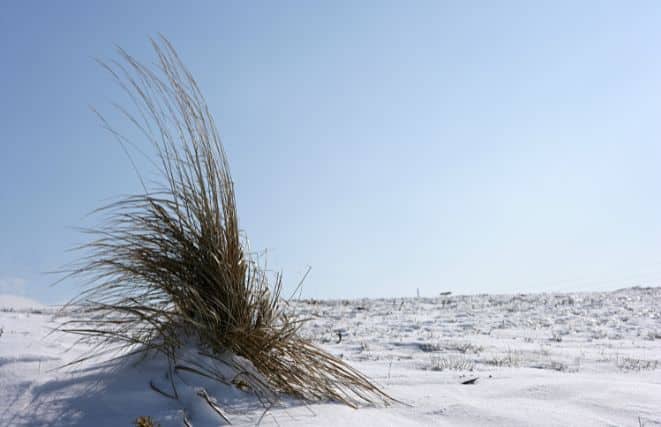
Pruning Tips for Vibrant Pampas Grass
Pruning plays a vital role in the health and appearance of pampas grass. Regular pruning not only helps maintain the plant’s shape but also stimulates fresh growth and ensures its longevity. Start by wearing protective clothing and gloves, as pampas grass leaves have sharp edges. Using sharp pruning shears, trim the grass to a height of about 12 inches from the ground in late winter or early spring, just before new growth emerges. This rejuvenation pruning encourages vigorous regrowth and prevents the grass from becoming too top-heavy.
To Help The Grass Remain Beautiful In The Winter, You Should Do The Following Tips:
- Tie the stalks and compress them together to prevent frost damage.
- Postpone pruning until late winter or early spring to protect the heart of the plant against frost.
- Cover the root area with dried leaves, straw or brushwood.
- Put the Pampas grass in a container and place it in a protected spot on an insulating mat.
- You need to tie the tuft of leaves together and cover the root area with straw, leaves, or wood.
- Finally, wrap the Pampas plant container in a thick coconut mat, fleece, jute, or bubble wrap.
- Bind the tuft of leaves together from bottom to top on a dry fall day to protect the center of the plant.
- Put the pampas grass in a protected spot on an insulating mat or store it against a protected house wall or beneath a roof overhang.
- It is better to cut or prune the grass in spring rather than in autumn to prevent the stalk from being damaged or rotten.
- Like other not reliably frost-hardy grasses, it is also better if you take the smaller grass clusters out of the bed over the winter.
- Use the right tools to cut pampas grass such as long-handled loppers and chainsaws for an easier and more effective task.
How Long Does Pampas Grass Last For?
Pampas grass is renowned for its impressive lifespan. With proper care and maintenance, this perennial beauty can persist for up to 20 years or more. Regular pruning, dividing the plant every few years, and providing it with the ideal growing conditions can help extend its life. By understanding the longevity of pampas grass, garden designers and beginners alike can plan for its presence in their landscapes, ensuring a lasting impact for years to come.
Does pampas grass come back every year?
Yes, pampas grass is a perennial plant that has the ability to come back every year. While it undergoes a period of dormancy during the winter months, with its foliage turning brown or yellow, the plant is not dead. As spring arrives, pampas grass awakens, sending up new growth from its base and producing its iconic plumes. By providing regular pruning, dividing the plant when needed, and ensuring optimal growing conditions, such as full sun and well-drained soil, gardeners can enjoy the persistent beauty of pampas grass in their landscapes for years to come.
Endurance Outdoors: How Long Does Pampas Grass Last Outside?
One of the remarkable qualities of pampas grass is its endurance in various outdoor environments. While it thrives in temperate climates, pampas grass can withstand a range of conditions, including heat, drought, and even cold winters. However, it’s worth noting that extreme and prolonged cold temperatures can impact the health of pampas grass. In regions with severe winters, additional protective measures may be necessary to safeguard this stunning grass. We’ll explore the case of pampas grass in the winter in the UK in more detail shortly.
Does Pampas Grass Die in the Winter UK?
The United Kingdom’s climate presents a unique challenge for pampas grass enthusiasts. While pampas grass can survive in the UK, it may struggle in areas with severe frosts and prolonged cold spells. In regions with milder winters, pampas grass can survive by following appropriate care guidelines, such as wrapping the plant with burlap or fleece for added insulation. Additionally, planting pampas grass in a sheltered spot and ensuring well-drained soil can increase its chances of surviving the winter in the UK.
Expert Insights: Pampas Grass in the Winter
Renowned landscape designer, Sarah Turner, shares her expertise on pampas grass survival in the winter in the UK: “Pampas grass is a beautiful addition to any garden, but its cold tolerance varies. In areas with harsh winters, it’s advisable to provide extra protection to avoid damage. By following a few simple precautions, such as proper pruning, mulching, and shielding the plant from strong winds, you can help your pampas grass thrive year after year.”
FAQ
No, pampas grass does not die once it’s been cut, but it will go through a period of recovery before regaining its full size and shape. Cutting back the plant can actually be beneficial, as it helps to stimulate new growth and prevent the plant from becoming too large or overgrown.
Pampas grass typically gets fluffy in the late summer or early fall, usually from August to October, depending on the climate and growing conditions. This is when the plumes, or feathery flower heads, of the plant begin to mature and open, creating a fluffy, cloud-like appearance.
The timing of the fluffy stage may also depend on the cultivar and growing conditions. Some varieties of pampas grass may have larger or more abundant plumes, while others may bloom earlier or later in the season.
Conclusion
As the winter season approaches, the question of whether pampas grass dies become a topic of concern for landscape and garden enthusiasts. While pampas grass does experience a period of dormancy during the winter months, it is far from dead.
With regular pruning, adequate care, and protective measures in regions with severe winters, pampas grass can grace our landscapes with its magnificent presence for many years. By understanding the specific needs of pampas grass and its adaptability to different climates, landscape designers, garden designers, and beginner gardeners can ensure the enduring beauty of this stunning ornamental grass in their outdoor spaces. Embrace the winter with confidence, knowing that pampas grass will rise again, adding elegance and charm to your gardens when spring arrives.
Now you know what to answer if someone asks you this question “does pampas grass die in the winter”. Help other people who are enthusiasts and fond of growing this type of grass know about the advantages and disadvantages of this amazing grass. Cold months are approaching so it is best to prepare ahead.

